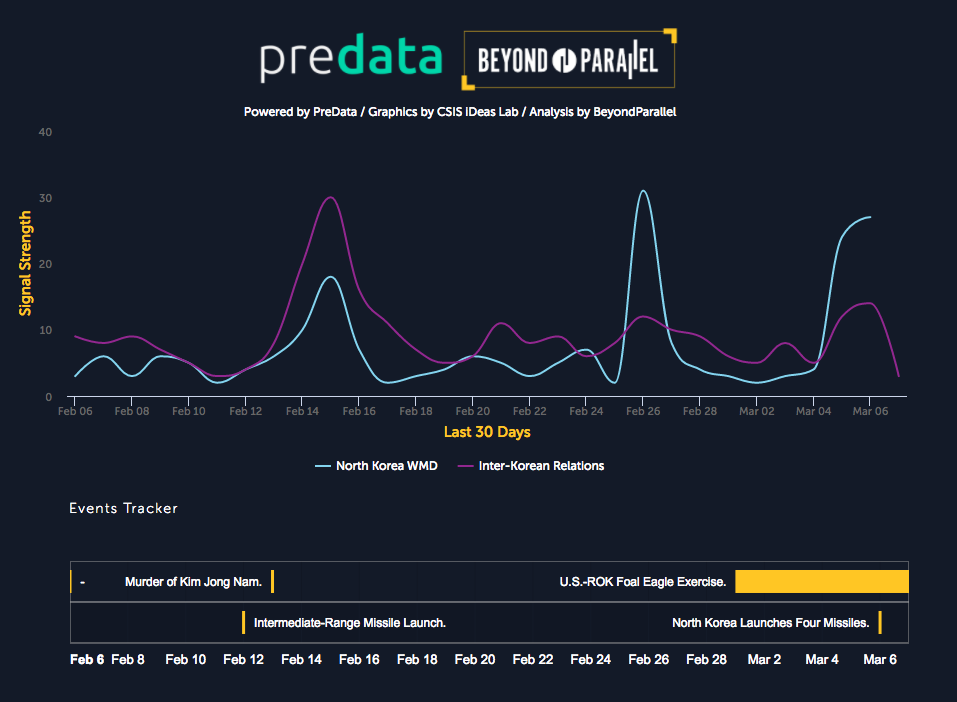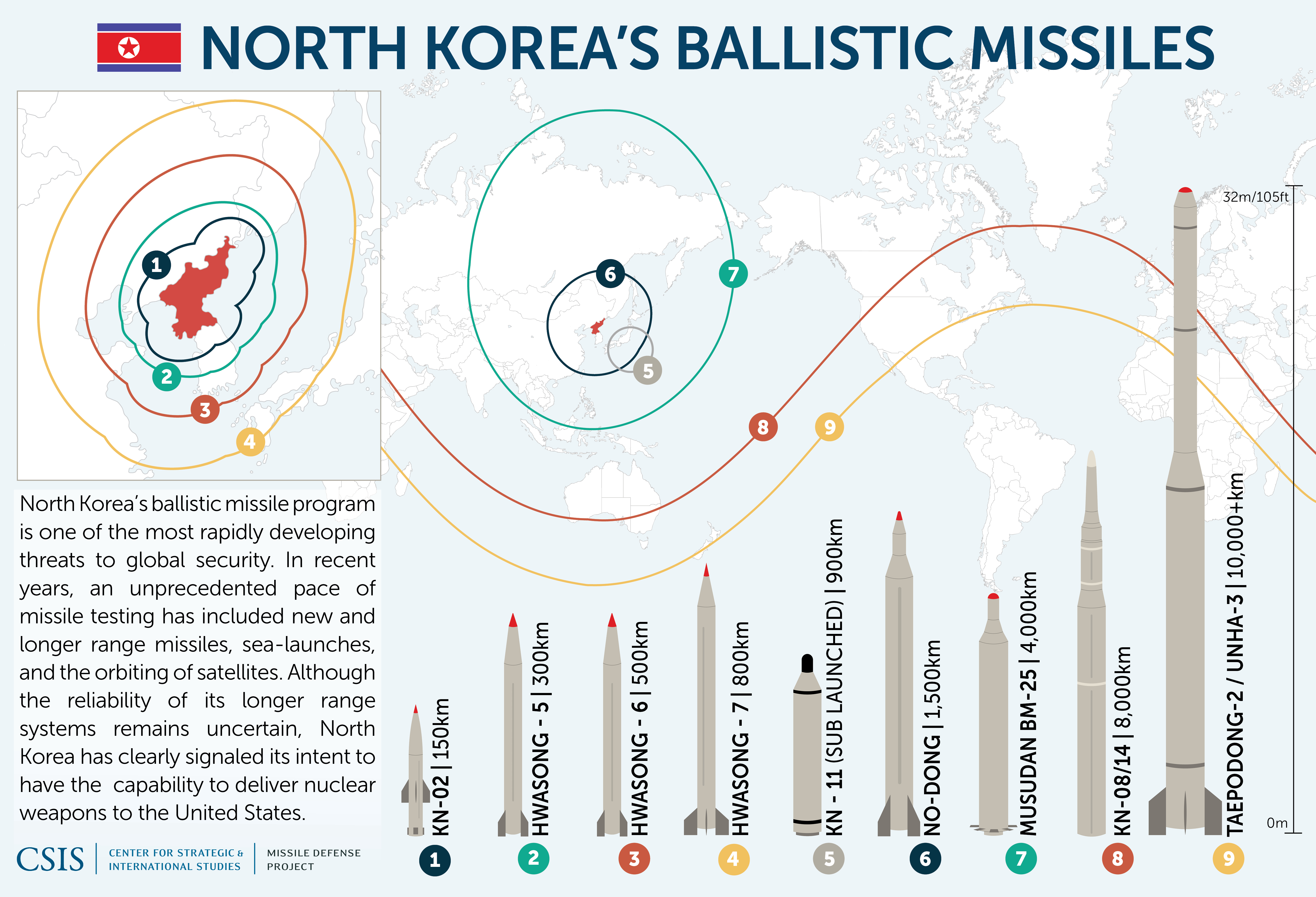
March Missiles: Predicting North Korea’s Next Provocation
A Predata-Beyond Parallel prediction indicates there is a 43% chance of North Korean WMD activity taking place in the next 14 days. In the next 30 days, there is a 62% chance for North Korean WMD activity. Beyond Parallel defines WMD activity as nuclear tests and ballistic missile launches.
As seen below, Predata’s North Korea WMD overview signal captured a notable spike in conversations beginning on March 4, just two days prior to North Korea’s March 6 missile launches, and the signal has remained elevated since. Further, the signal’s 30-day exponential moving average started trending up on March 4, reaching its highest point in the previous 90 days on March 6. These signals indicate there are more March missile tests to come from North Korea.
Click here for interactive
The underlying signal for this prediction started spiking on February 28, also capturing a notable spike in conversations prior to the March 6 launches, and remaining elevated since. Indeed, the 30-day exponential average for the North Korea WMD missile test signal has been edging up since February 18.
These signal predictions are in line with, and corroborated by, other Beyond Parallel empirical studies of North Korean behavior and events on the Korean peninsula. March 1 kicked off the annual spring joint U.S.-Republic of Korea (ROK) military exercises to which North Korea often issues strong statements and sometimes conducts provocations. Beyond Parallel studies have found that the U.S.-ROK exercises themselves do not provoke North Korea. Rather, it is the state of U.S.-North Korea relations in the 4-8 week window prior to the joint exercise period that serves as the best indicator of North Korean behavior during these annual exercises. When U.S.-North Korea relations during this window are coded as negative then the exercise period will see a high level of provocations. And this year’s bilateral relations between the United States and North Korea have certainly been negative.
North Korea’s missile program has been rapidly developing with a fast pace of missile testing on a wide variety of missile types in recent years. To explore North Korea’s ballistic missiles in further detail, visit the CSIS Missile Defense Project.
These predictions are made possible through a Predata-CSIS Beyond Parallel collaboration seeking to bring open source intelligence tools and big data analytics to issues related to the Korean peninsula. The signals are drawn from open sources across the internet which provide a rich source of information for insights and context to current events and ongoing trends. Predata’s analytics are paired with Beyond Parallel databases of historical events to analyze current trends and make predictions about future events. 


